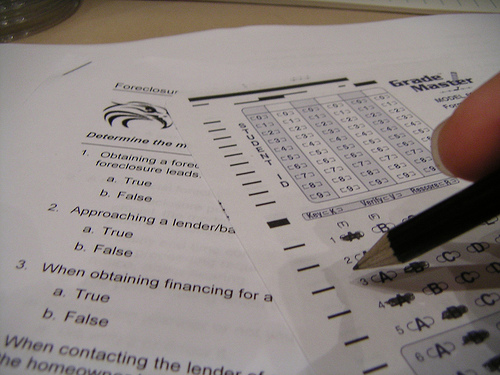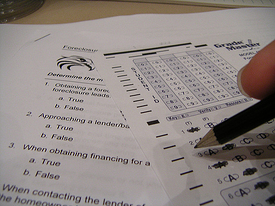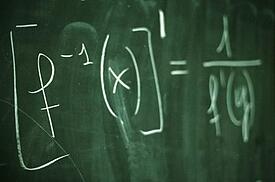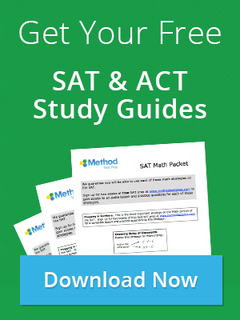An Older Guy Takes the SAT - Part 2

This past Saturday, I took the redesigned SAT. Click here for Part 1 of my reflections on the experience. In Part 2 below, I give a few thoughts about each section of the exam. The College Board was very clear that test takers were not to reveal any specific questions that were on the test, so I will avoid doing that.
 I found the 65-minute, 52-question Reading section of this new SAT to be easier than the Critical Reading sections of the old SAT. While the increased length of this section presented the biggest challenge, I preferred one long section to the old SAT’s three shorter, 25-minute sections. The passages seemed more straightforward and there was more time per question. Also, there are now only four answer choices as opposed to five. Since eliminating answer choices is such an important strategy, getting rid of three choices as opposed to four was a lot less mentally taxing and saved me a lot of time. I was able to finish this section with enough time to go back and check some answers.
I found the 65-minute, 52-question Reading section of this new SAT to be easier than the Critical Reading sections of the old SAT. While the increased length of this section presented the biggest challenge, I preferred one long section to the old SAT’s three shorter, 25-minute sections. The passages seemed more straightforward and there was more time per question. Also, there are now only four answer choices as opposed to five. Since eliminating answer choices is such an important strategy, getting rid of three choices as opposed to four was a lot less mentally taxing and saved me a lot of time. I was able to finish this section with enough time to go back and check some answers.
After an indispensable bathroom and snack break (see my first post), the 35-minute, 44-question Writing & Language section was up. I found this section just as manageable as the first. There were so many predictable, formulaic questions testing rules of grammar and structure: subject-verb agreement, eliminating redundant phrases, it’s vs. its, etc. As long as students spend time practicing the right concepts for this section, they will feel comfortable. The only caveat is the time constraint: students need to be careful not to lose their concentration, even for just a minute. Students also need to be careful not to spend too much time double-checking answers. On any untimed test, I like to read a question a second or third time to make sure I am not missing something, but on this new SAT Writing & Language section, there was not enough time to do so.
 The 25-minute, 20-question “No-Calculator” Math section was next. As expected, the first handful of questions were very basic high school-level math questions that took only 20 seconds or so each. Very quickly, however, the difficulty level ramped up. I struggled on a few of the hardest multiple choice and a few of the hardest “grid-in” problems. For me, it wasn’t so much the fact that I couldn’t use a calculator; it was more the fact that I hadn’t trained enough on some of the higher level strategies that I should have been ready to use. Since I hadn’t practiced enough with these tougher concepts before the test, I was forced to rely on a “brute-force” approach that didn’t give me enough time to finish every question, and may not have worked even if I had had a few extra minutes.
The 25-minute, 20-question “No-Calculator” Math section was next. As expected, the first handful of questions were very basic high school-level math questions that took only 20 seconds or so each. Very quickly, however, the difficulty level ramped up. I struggled on a few of the hardest multiple choice and a few of the hardest “grid-in” problems. For me, it wasn’t so much the fact that I couldn’t use a calculator; it was more the fact that I hadn’t trained enough on some of the higher level strategies that I should have been ready to use. Since I hadn’t practiced enough with these tougher concepts before the test, I was forced to rely on a “brute-force” approach that didn’t give me enough time to finish every question, and may not have worked even if I had had a few extra minutes.
After a second, shorter bathroom and snack break (don’t forget to bring a snack to eat during each break––it doesn’t make sense to starve your brain for 5 hours) the 55-minute, 38-question “Calculator Allowed” Math section was up next. My experience here was similar to the one I had on the first math section: many of the questions covered basic concepts for which I was well prepared, but a few advanced math questions gave me trouble. While I knew there were faster ways to solve the problems, I found myself underprepared to handle them. Also, both sections were very “reading-heavy”; while we knew this was coming from our review of the practice tests the College Board had released, the increased wordiness of the question text was still something that stood out as a difference from the old SAT.
 The big takeaway for me––and the thought that kept going through my head––was, “this is a test students can train for and improve on.” The College Board has told us what question types and content the revised SAT will test. If a student follows a legitimate study plan and puts in enough repetition and practice, that student will not be caught off guard by this test and will recognize many predictable questions.
The big takeaway for me––and the thought that kept going through my head––was, “this is a test students can train for and improve on.” The College Board has told us what question types and content the revised SAT will test. If a student follows a legitimate study plan and puts in enough repetition and practice, that student will not be caught off guard by this test and will recognize many predictable questions.
I signed up to take the optional essay section, and can say that it is a much improved writing exercise. Having 50 minutes to complete the writing assignment gave me the time to craft what I felt was a well-organized essay. The task––which requires students to explain how the author of a provided written work builds an argument––is a worthwhile challenge for a high school student looking to make a successful transition to college: we all know that being a strong writer is crucial to college success. If I were a college admissions officer, I would use the essay as a factor in an admissions decision; I would find peace of mind in the fact that this is one writing sample the student had to complete without any help, and without relying on opinion or questionable facts.
All in all, this test was exactly what the College Board said it would be: lots of reading (even on the math), questions with a great deal of real-world context built in, algebra-dominant, and lacking in geometry. For students who prepared using the right materials, there were undoubtedly many questions that came as no surprise. But for students who don’t prepare or who easily lose their focus, this test is going to be a long and frustrating five hours.


